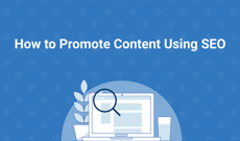SEO and internet marketing heavily rely on high-quality content. Content is everywhere: advertorials, texts, web pages, social media posts. Besides, many Google core updates are also related to it. But what is 'good' content?
A lot of theories, conjectures, and myths surround this topic. But the most effective way to see what makes content stand out is to simply look at it. In this article, we will go through the steps to perform a competitive content analysis in any niche, so you’ll be able to implement the best practices and outshine the competition.
What Is a Competitive Content Analysis?
Competitive content analysis is researching your competitors’ content to determine common features and best practices. It is divided into 2 processes: domain analysis and document analysis.
- Domain analysis is the research of the best-performing domains in your niche. It’s a quantitative analysis—domain content analysis uses one page as a minimal unit of measure to gather statistics. The result of this research is understanding the content strategy of top domains: what topics they are focusing on, how many pages they have, what their content categories are, etc.
- Document analysis is qualitative research focused on a single page to determine the elements that make the content stand out. The result of this analysis can answer these and other questions:
-
- Do your competitors use video on a page?
- How do they work with keywords?
- What page structure do they use for each category?
Why is a Competitive Content Analysis Important?
The whole point of this process is to make your content better than that of your competitors.
To be the best in content creation, you need to understand how to provide users with what they want to see. The most effective way is to research top-performing players in the market.
How to Do a Domain Content Analysis
By the end of this chapter, you’ll be able to create a content strategy with a clear picture of why and how you should do it.
#1 Make a list of your competitors
First of all, discover who you need to outshine. To find your main competitors, you must target keywords and get the organic search share.
To do that, you need to analyze the SERP by each keyword in your target country and build Search Engine (SE) visibility. Luckily, some services automate this process and quickly gather your main organic rivals. We’ll be using the competitor research tool by SE Ranking for this since it's a fast and accurate tool that covers all GEOs.
How to find the main domains that compete for the same keywords as your website
To determine a competitive landscape, all we need to do is enter the domain in the SE Ranking’s 'Competitive research' tool. We will be able to see the domains that share keywords right away. Let’s see how it works taking ‘bmw.com’ as an example:
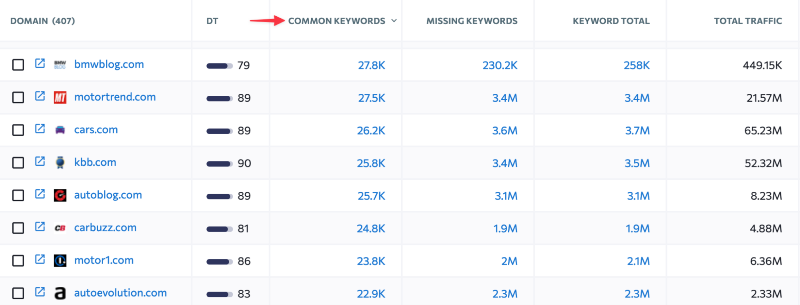
In this list, there are several competitor types:
- Direct competitors: These websites target the same keywords, providing the same service you do.
- Indirect competitors: These domains fulfill similar customer needs or partly target your niche.
- Newcomers: These direct competitors actively grow by targeting the same keywords as you.
As a result of this step, you should have a list of competitors with their category.
#2 Make a content summary
Great, now you have the domains you need to analyze. Let’s learn how to do it.
You need to understand what content categories are driving traffic to the competitor domain. Are these landing pages, blog posts, or, perhaps, user-generated content (e.g., discussion boards)?
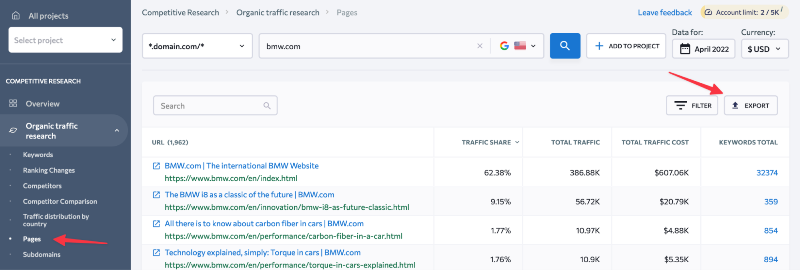
You need to look through the best-performing pages to determine which categories bring the most traffic. Usually, you can understand the type of content if the site has a directory-based URL structure. For BMW's site, those categories are ‘performance’, ‘models', ‘innovations’, etc.
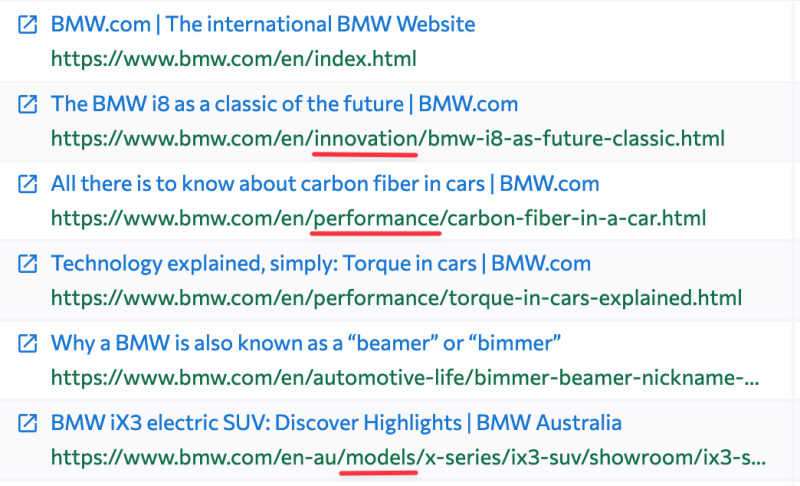
#3 Perform a Content Audit
Now you understand which pages are generating SEO traffic for your competitors. But there are a lot of pages that don’t have any search visibility, and you can go deeper and analyze those pages as well.
But why analyze pages that aren’t presented in the SERP? There are two main reasons to do that:
- Online SEO tools don’t have data on low-volume keywords, so they don’t have data on pages that rank by those keywords. By analyzing all pages, you will get complete data on what your competitor is writing about.
- Even though a page receives zero search clicks, it can be valuable to users and generate conversions for the business.
Discover content quantity and types
Similar to what we’ve done with analyzing traffic by categories, you can break down a website’s actual content into categories. The best way to do this is by scanning your competitor’s website with Screaming Frog. Then, you’ll be able to visualize it based on the internal linking or URL structure method.
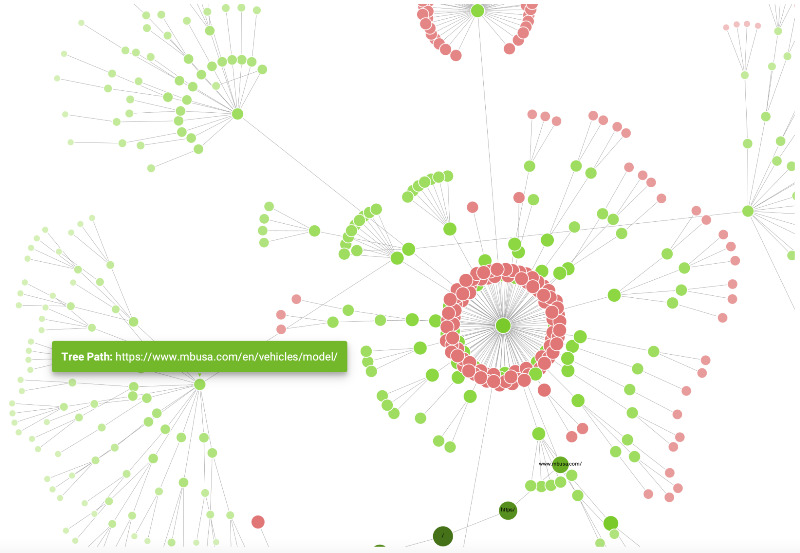
It’s an excellent way to visualize data because not only are you able to see clusters of specific categories, but you can also count pages inside them. It’s more than enough to understand your competitor’s website structure based on the published pages. When gathering data, make sure to use a professional annotation tool to prepare the data for your AI model.
Find out how frequently the content is published
So, we’ve seen where our competitor’s at. How long can it take us to catch up? And how can we get the historical data of the website’s content? We’ll need a time machine... Wait—Wayback Machine from the Internet Archive will do the trick. The 'Summary' report by domain will show how many new pages were added each year, which you could consider when conducting your content strategy. It’ll help you understand how often you should publish new pages.
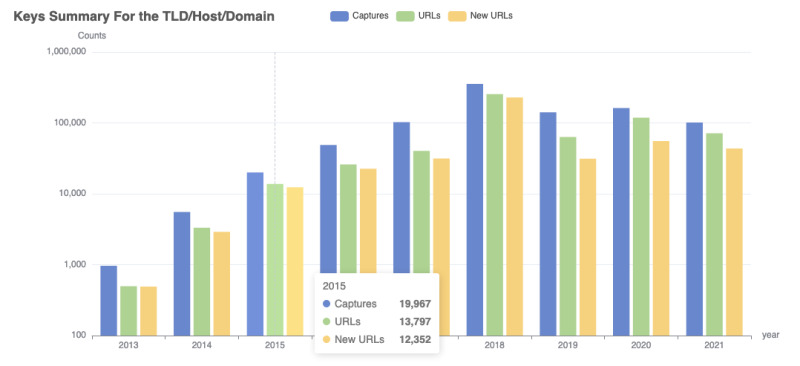
#4 Determine domain topic relevance
Domain topic authority is acquired when a domain gains trust in the topic because the website’s content is well-rated by search engines and satisfies users’ intent. Thus, consider using a custom domain name to enhance your site's credibility and brand recognition. For example, an automotive website will have good chances of getting high SERPs on car-related keywords but will not rank high on 'cat food' keywords. However, automotive sites can rank high on related topics. For instance, 'car audio' or 'baby car seats' are absolutely fine for auto sites. We can understand whether our rival is a direct competitor via this concept.
To figure out the competitor type, compare missing keywords with common keywords in SE Ranking’s Organic traffic research.
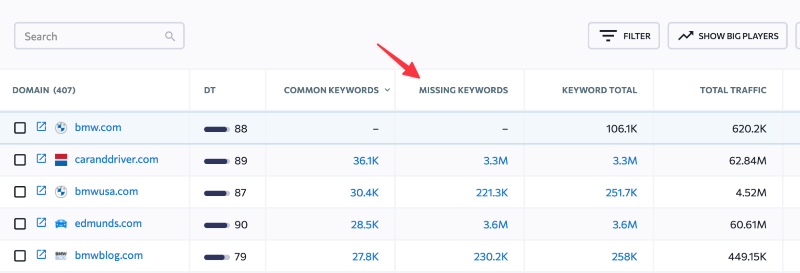
You can interpret the missing/common ratio in several ways:
- >>1 shows your indirect competitors that have very few keywords you compete at. Those are big domains that know how to provide the best UX—take a closer look at their site and page structure;
- ~1 means that the site is your twin in terms of positioning. You should examine its content very closely to know everything they are doing to be better;
- <<1 stands for the underdogs in your niche. For now, you can check them briefly—perhaps, they bring something new to the niche? Also, don’t take your eyes off of them—one day, they can become your direct competitors.
How to Do a Single-Page Content Analysis
We’ve learned how to do a macro analysis, so let’s get to microanalysis. The success of a website comes from the cumulative effect of valuable pages, while the success of a page comes from the page elements that answer the user’s intent. This leads us to this conclusion: we need to find what content parts make a page 'good'. There are two main areas for this research: UX and SEO.
#1 Evaluate Content Quality
You would probably agree that plain text is not the most effective way of consuming information. Imagine reading all of the text above in a default notepad with no formatting or illustrations. It would be a nightmare. Understanding that, modern algorithms can evaluate how readable and engaging the content is for users. And the best examples of content often have a high ranking. All we have to do is examine them.
- Content message. The purpose of content is to fulfill the user’s intention. The perfect content is a product listing bikes if they want to buy a bike. And if a user wants to know how to make a competitive content analysis, the best answer is an article containing comprehensive information and useful recommendations.
- Level of difficulty (introductory or proficient). By understanding what users want to see, you can determine the difficulty of producing your content. Does it require a senior software engineer to perform technical wizardry, a niche-specific content writer with ten years of experience, or can an AI writer generate it? You need to evaluate how difficult it is to create the content and whether there’s an easy way to make it.
- Length of the content. In recent years, the content volume has sometimes been overlooked because of quality > quantity. But why choose? In general, lengthier content provides a wider topic coverage, which improves overall content quality. The only time extra content can be harmful is if it repeats itself or brings no added value—there’s no need to write the same thing over and over again just to increase the volume. In terms of competitiveness, you need to make sure your content’s length matches or exceeds the length of the content that appears in the top 3 sites in the search results by relevant keywords. Calculate the word average, and add 10%–20% of this volume to aim slightly higher.
- Structure. Your text should be divided into logical blocks so that a reader can easily understand and navigate the page. H2 to H6 headings are an excellent, time-tested method for achieving this. Look through your competitors’ headings for these two things:
- Common headings. The logic is simple: if everyone at the top is writing about it, you should too. It’s not about replicating content. If top pages have the same headings, it’s because they offer value for a user, and ignoring such content will decrease your page value.
- Unique headings that bring more value to the content. You can rephrase an existing header and include it in your article or use it as inspiration for new ideas.
- Visual assets. Most of the time, content requires some media to visualize the data. Conduct a brief research on what visuals your competitors use, and collect common and unique features to include in your page (not the media itself but its type, i.e., video guide or pie chart)
#2 Establish the page’s SEO Focus
We’ve learned how to make the content loved by users. Now let’s discuss how to make it discoverable by robots. For them, it’s much harder to understand your content, so you need to 'speak their language'. Here is how to do it:
- The page title is one of the most valuable pieces of content in terms of interpretation by bots. You’re basically telling them what your page is about by naming it.
Take a look at a SERP and inspect the titles there—see any patterns?
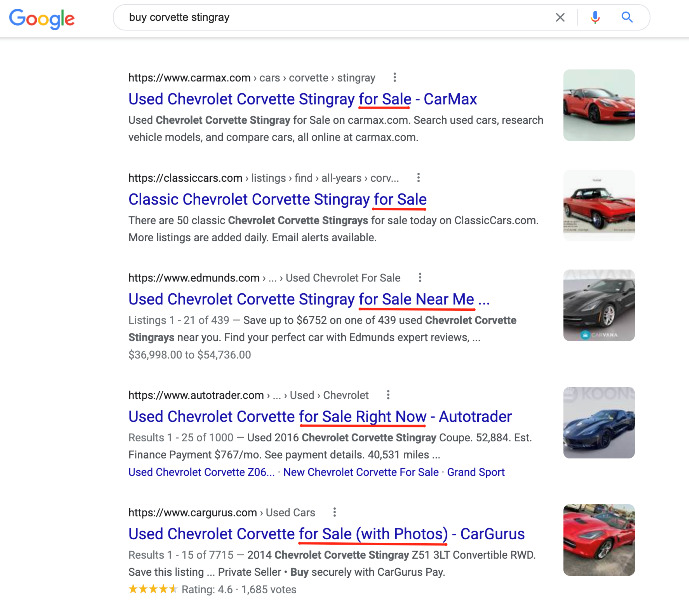
We see that top pages besides Chevrolet’s website use ‘for sale’ in the title. If you have a similar page, you must include those words in your title.
Don’t forget about the length restriction for titles. Check your title in the SERP simulator—it shouldn’t be cropped with an ellipsis.

- URL architecture. The URL must be short yet easily understandable, and it’s a good idea to have your focus keyword included there. The URL https://www.caranddriver.com/news/a39813141/corvette-ev-confirmed/ speaks for itself. You have an idea of what page you can expect to see following this link: Corvette EV confirmed coming soon on the market. If you aren’t sure how to create a URL, check the SERP to get hints. Generally speaking, you’ll see a pattern by checking the first 5 URLs.
- H1 tag. The main heading, H1, is as important as the Title tag. Treat H1 as your main name of a page as it’s displayed on the first screen and tells both users and bots what your page is about.

Recommendations are the same: check how top competitors implement standard techniques. Also, use one of the top keywords for the page, but make sure it’s not the same as the title.
- Keyword density. Keywords make it easier for algorithms to understand your content. You need to include search terms in your content, but don’t overuse them. To find that sweet spot, determine the average keyword density for competing URLs:
- Go to an SEO density checker, such as SEO Review Tools.
- Paste the content. Use only the article itself—exclude header, sidebar, and footer.
- Check the percentages for 2-3 word phrases and check what word is used most often.
Doing this for the top 3 sites that appear in the search will answer what density you should aim for. In general, try not to exceed 3% for a one word-keyword, 2% for 2-word phrases, and 1% for 3-word phrases.
- Image alt and title text. If you use an image, make sure it has an 'alt' attribute with your focus keywords in it. For bots, it’s a text description of an image that they understand better.
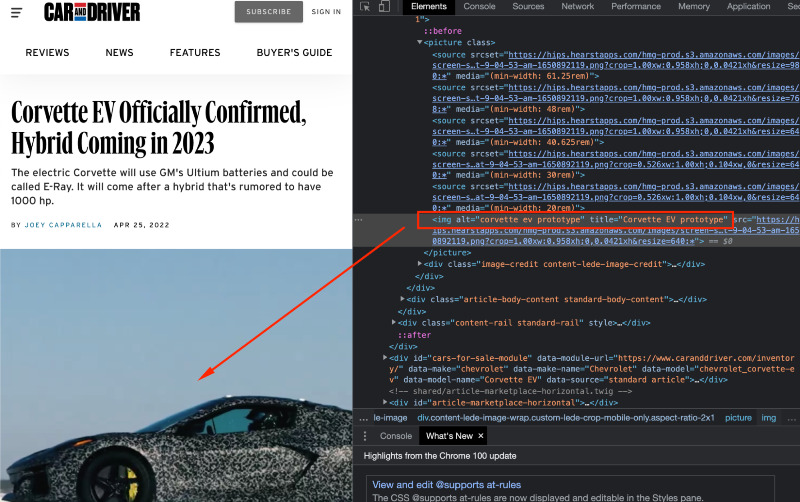
- Use of internal linking. You need to connect the pages related to the topic of the page in question via internal links. Not only does it provide a better user experience since you cover adjacent categories, but you add 'weight' to the destination page. That’s why the most important pages should have more incoming links.
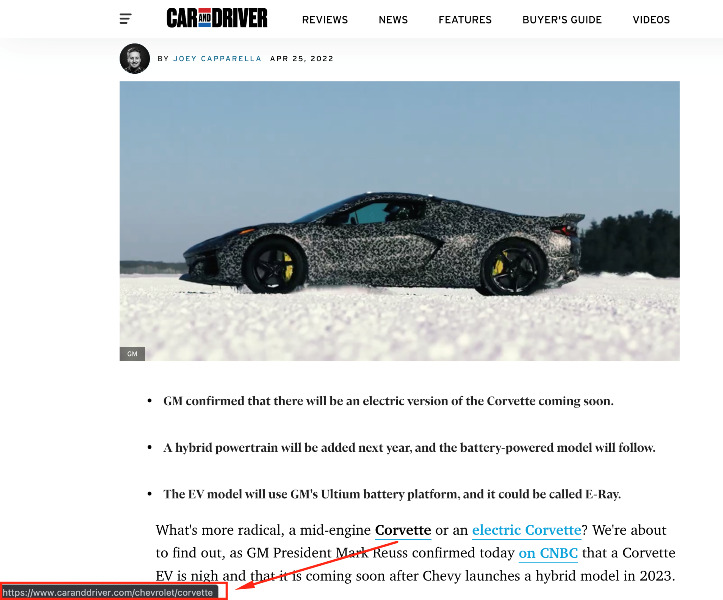
Not only that, but internal linking creates the website structure we mentioned earlier. Explore visualization to know what pages to link, and top SERP pages to see what anchor text to use.
To ensure that you’ve done everything SEO-wise, it’s a good idea to use automated on-page SEO checkers. Check warnings and errors from SE Ranking to get a to-do list of on-page SEO optimization opportunities.
Conclusion
Following the steps above, you can examine all levels of your content. You’ll be able to clearly see how your competitors achieve their results and, most importantly, how you can beat them.
Written by Alina Tytarenko, SE Ranking

